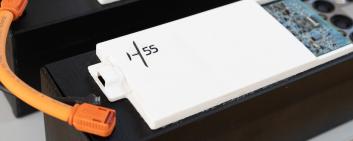In a breakthrough from EPFL’s Laboratory of Construction Materials, a new cement-making material, LC3, promises to redefine the construction industry’s approach to sustainability. Spearheaded by Karen Scrivener, the head of the laboratory, this innovation could significantly reduce the environmental impact of concrete production, traditionally known for its high carbon footprint.
Concrete, an essential global construction material, is produced at an astonishing four tons annually for every human on Earth. The major challenge lies in cement, specifically clinker, its primary ingredient, which alone contributes to 90% of cement’s carbon emissions. LC3 (Limestone Calcined Clay Cement) positions itself as a groundbreaking solution, replacing half the clinker with calcined clay and ground limestone. These materials, unlike clinker, don’t release carbon when heated, and their lower heating temperature allows for more environmentally friendly energy sources like electricity. This novel approach slashes CO2 emissions by approximately 40% compared to traditional cement.
Beyond its environmental benefits, LC3 enhances concrete’s durability, particularly against water and salt, thus prolonging the lifespan of roads and bridges. Its lower production cost and use of widely available clay make it an economically viable alternative, offering up to 25% savings over conventional cement.
LC3’s rapid growth and adoption worldwide underscore its potential to revolutionize the cement industry. Cement giants like Holcim and Argos Cementos are already incorporating LC3 into their production, with significant CO2 savings reported. Its scalability indicates a potential to prevent up to 500 million tons of CO2 emissions by 2030.
A significant impact in the Global South
The most significant impact of LC3 could be in the Global South, particularly in Africa, where rapid population growth and limited clinker resources pose challenges. LC3’s use of locally sourced clays could empower these regions with sustainable, affordable construction solutions, fostering local industries and reducing reliance on clinker imports.
EPFL‘s innovation extends beyond LC3, exploring ways to optimize the entire concrete value chain for sustainability. Strategies include improving plant energy efficiency, using alternative fuels, optimizing aggregate selection, and enhancing concrete design and usage efficiency. When combined, these approaches could achieve an 80% reduction in emissions from cement and concrete with current technologies.







